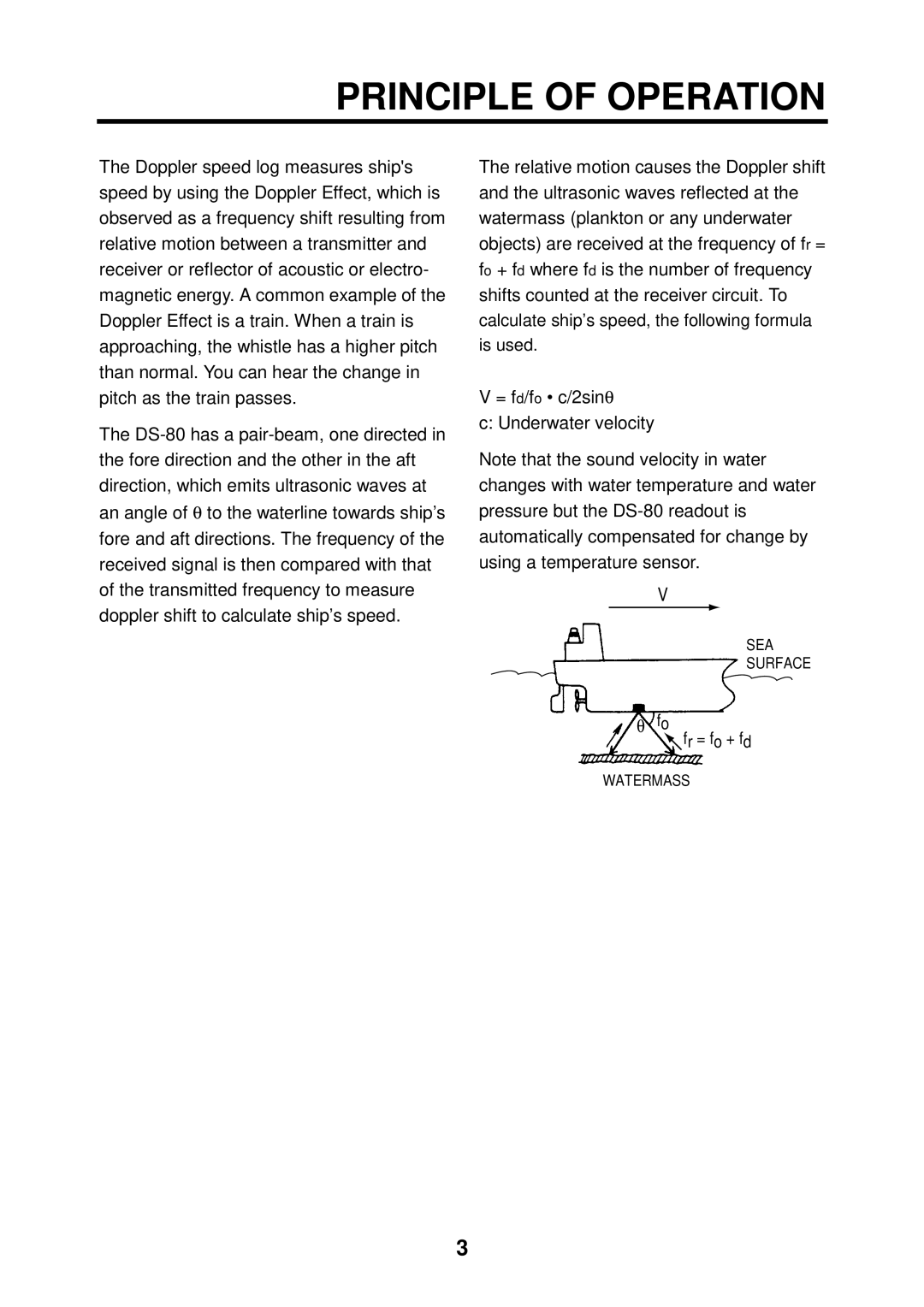
PRINCIPLE OF OPERATION
The Doppler speed log measures ship's speed by using the Doppler Effect, which is observed as a frequency shift resulting from relative motion between a transmitter and receiver or reflector of acoustic or electro- magnetic energy. A common example of the Doppler Effect is a train. When a train is approaching, the whistle has a higher pitch than normal. You can hear the change in pitch as the train passes.
The
The relative motion causes the Doppler shift and the ultrasonic waves reflected at the watermass (plankton or any underwater objects) are received at the frequency of fr = fo + fd where fd is the number of frequency shifts counted at the receiver circuit. To
calculate ship’s speed, the following formula is used.
V = fd/fo • c/2sinθ
c: Underwater velocity
Note that the sound velocity in water changes with water temperature and water pressure but the
V
SEA
SURFACE
θ fo
![]() fr = fo + fd
fr = fo + fd
WATERMASS
3
